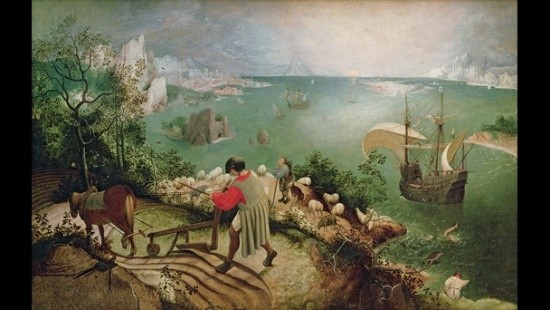Aarsh Shah, BA, MS2, Touro College of Osteopathic Medicine, and Priya Dave, BA, MS4 Icahn School of Medicine at Mount Sinai and MBE Candidate at Harvard Medical School
American College of Radiology® (ACR®) Bioethics and Humanities in Radiology Co-Leads

Aarsh Shah, BA |

Priya Dave, BA |
For first-time viewers of “Landscape with the Fall of Icarus,” (below) it is easy to glance past Icarus struggling to keep afloat at the lower right corner of the otherwise serene portrait. Particularly when the others in the painting are preoccupied with their own daily responsibilities and tasks, the central character’s struggle is significantly reduced. The image is an illustrative example of the importance of medical humanities in recentering our attention toward the patient. The medical humanities combine elements from the social sciences, including anthropology, sociology and the traditional humanities, including literature and bioethics, to keep the patient experience at the center of how we practice medicine.
The humanities can make us better providers of healthcare. We can use visual arts to hone our skills in observation. Utilizing an ethical lens can inform us about the potential unintended implications of incorporating new technology and innovation into the field. Through literature and narrative medicine, the ability to connect with a patient’s journey can alleviate burnout and moral distress — that a radiologist sees not only the radiograph on their screen, but the patient to whom the scan belongs.
As such, we have begun the initial steps in developing a Bioethics and Medical Humanities team. In this team, medical students interested in radiology and the humanities will work together to spread awareness of the importance of holistic patient-centered care, network with residents and attendings with similar interests, and participate in scholarly activity. We hope to bridge the gap between the creative arts and advancing technology in radiology and highlight how an interdisciplinary study can continue to foster patient-centered medical care in radiology.

“Landscape with the Fall of Icarus” |


